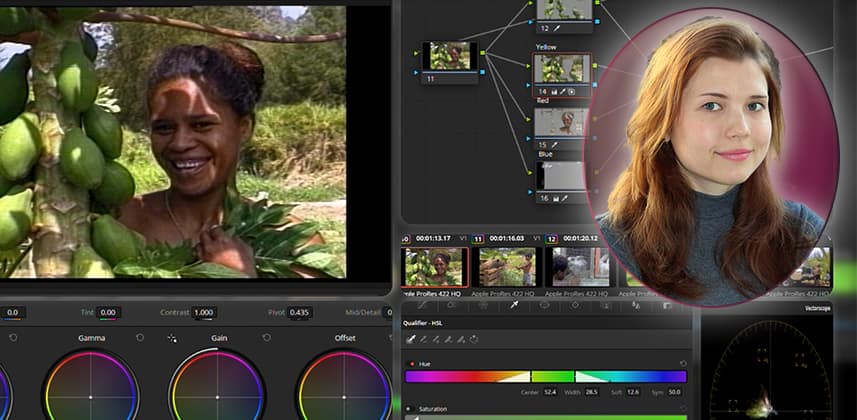| Series |
|---|
Archival Restoration Part 5: Working with Memory Colors Using ‘Old School’ Techniques
DaVinci Resolve’s preset Color Vectors can be used in a node pipeline template to access secondary color adjustments quickly. Unlike the many secondary grading palettes available in the Color page, which rely on careful adjustment and mouse control, these simple nodes can be customized to target the specific hue, saturation, and luminance ranges in your project for immediate correction with basic adjustment tools like hue and saturation, as well as primary tools like the color wheels and master sliders.
What about Resolve’s ColorSlice?
The new ColorSlice palette in DaVinci Resolve 19 works similarly to the color vectors and allows for additional subtractive and density adjustments, producing filmic looks. However, in their simplicity, the color vectors still offer a great amount of qualifier customization and unlimited grading parameter choices for super-quick turnarounds.
Key takeaways from this Insight
Member Content
Sorry... the rest of this content is for members only. You'll need to login or Join Now to continue (we hope you do!).
Need more information about our memberships? Click to learn more.
Membership optionsMember Login


